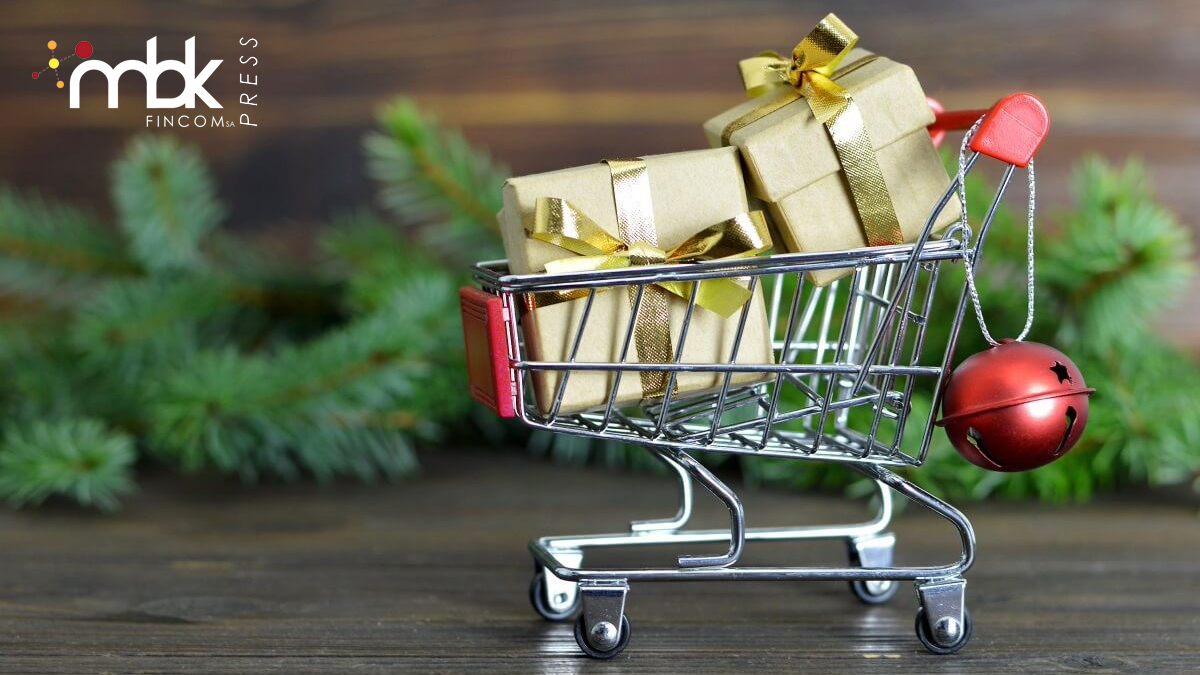What will be the average per head spend this Christmas 2021? What are the most interesting purchasing trends for consumers? Do we know anything about means and methods? But above all, has there been any sign of growth compared to last year? All the answers in an MBK survey to prepare for the holiday season.
The whole month of December is usually a “race to the checkout”; the shopping
fever that is kicked off by Black Friday, in fact, reaches its peak in the uncontrolled search for the best Christmas gifts (and the cheapest prices). Every year, however, it is not only sales and purchasing trends that change, but also average budgets; the European average, unfortunately, despite a slight recovery during the pandemic situation, has seen a drop in the latter. This means that Christmas 2021 will be devoted to different purchasing strategies; let’s see the results of the MBK research.
Change of viewpoints, but also of means
What most characterises the “jump” from the last Christmas is certainly the general sentiment, both in digital and social behaviour.
If the last quarter of 2020 came to a close with black outlooks and data (just think of the holidays in lockdown and the Covid19 numbers), this year is living in a more
tamed prudence; the massive vaccination campaign, the citizens’ fatigue and the need to return, step by step, to a level of normality as close as possible to the “before”, are drawing a quieter and more enjoyable perspective for these holidays.
What is changing is mainly the method; while the classic weeks of shop-hopping frenzy were among the least objectionable activities in the weeks leading up to Christmas, 2021 sees an increase of almost 20% (18 points) across Europe in e-commerce for gift buying. No less than 70% of shoppers plan their purchases, 45% split their spending between online and in-store and, most importantly, 21% choose eCommerce as their sole shopping channel (an increase of 11% to 15% between the countries under review by Christmas 2020).

An early purchase route
If every year the Christmas shopping period precedes the festivities by a few weeks, Christmas 2021 was even more anticipated. It started well before Black Friday (unlike usual) and saw a maturation of purchasing choices of almost two full months.
An interesting fact to note comes from the analysis of search intent; the majority of organic searches, in fact, showed a clear informational intent. This denotes a need for meticulous detail on the part of users, who are reducing emotional purchases (still high, but concentrated in events such as the BF), to the detriment of choices based on analysis and comparison. On the retail side, the situation should therefore lead to a better definition of the communication strategy, especially in relation to the description of the products/services, based on a storytelling that is more emotional than persuasive (to bring users back to that track).
The data on omni-channeling are also interesting; searches had a lot of mobile traffic, often driven by social platforms. Transactional results were different, with mCommerce still gravitating to below 40% of total transactions (which is still a good result).
Different perspectives
In the light of this, let’s take a look at who the holiday shoppers are.
At the forefront we have Generation Z users, who are active in large numbers (four out of five not only want to buy gifts, that they will do so online), followed by that of Millennials; this is because these are the two’s categories of consumers with the closest relationship with technology, but especially with the dynamics of digital communication, and therefore more sensitive to them.
Three out of five of these players want to spend the holidays with their families, and 37% intend to travel: two out of five staying close to home, and just 15% with tickets to foreign countries. Leading this trend is not only the question of costs (also because airlines are offering interesting discounts, with a view to recovery), but above all the fear of an unexpected closure, and the desire not to be separated from their loved ones.
The picture of the average Christmas gift budget is different
No cross-country constant could be determined; no north/south Europe, east/west, Mediterranean/insular/continental constant. The realities are all very peculiar, very much linked to social and cultural circumstances (some countries, especially those in the Christian Orthodox area, do not consider Christmas as a consumer holiday).
Calculating a weighted average, and levelling out the specificities above, the budget for gifts/restricted spending this year is about 340€ per head.
This is a drop of about 8% for some countries, which is significant if we consider the measures taken by many national governments to buffer the limitations imposed by Covid-austerity. If we then take into account the high prices of some crucial sectors for the period, such as toys, we understand that in reality this budget decrease is even more of a hassle for many families.

Christmas 2021 trends
If at the first place, and most worthy of mention, we find the increase of online purchases (even for gifts traditionally chosen “live”), the trends for this Christmas are:
- taste for vintage: clothing, decorations, but also traditions, menus and old school gifts are increasingly in fashion;
- recycling and green: gifts from eco-friendly brands, or even recycled decorations, all in line with the (fortunate) general awakening of consciousness;
- family Christmas: this year more families decided to get together for Christmas, including the extended sphere, at the expense of travelling holidays;
- alternative Christmas trees: for this year, the classic green fir tree is almost outnumbered by the white one, which offers more interesting decoration ideas. Also in vogue are “alternative plants“, always to be decorated with imagination;
- shabby chic and do-it-yourself: solutions reminiscent of a revival style, a little bit rural, are popular for the simplicity they communicate;
- neutral colours: while the warmth of Christmas has always been communicated by coloured lights, festoons and decorations, the choice of white, black and grey solutions is increasingly popular, especially in design environments;
- quick trips: and low cost, above all, as a small buffer to lower budgets and increased travel anxiety;
- wines, dinners, aperitifs: experiential solutions stand out among Christmas gifts. Giving the gift of something to enjoy together, and to remember, is becoming an increasingly popular trend.
In conclusion
The figures speak for themselves: even if it will be a Christmas that will involve some sacrifices, the year 2021 will certainly not be one to be forgotten.
In fact, the reduction of spending limits does not automatically translate into a cancellation of purchases; consumers are readjusting their habits, learning to rationalize and to live the festive season giving value to the experience rather than to the product.
Sources:
- Corporate PR
- Marketing Dept. ProduceShop (https://mbkfincom.com/)
- Criteo
- Deloitte
- Reuters
- PwC
- The Guardian
- Gov.Uk
- Actu.fr
- Forbes
- TgCom24


